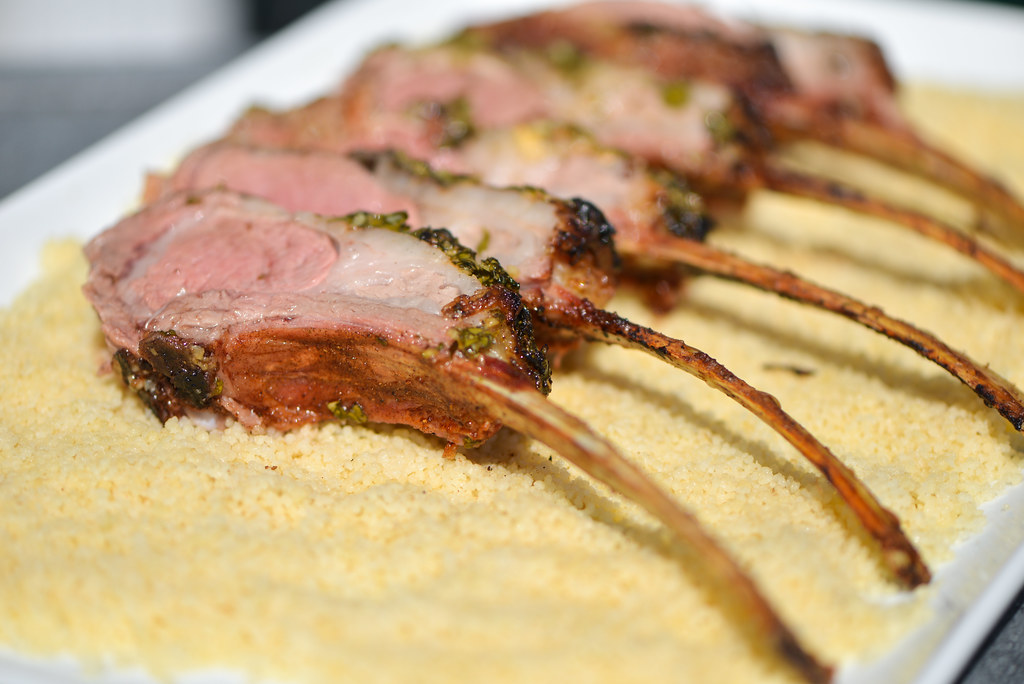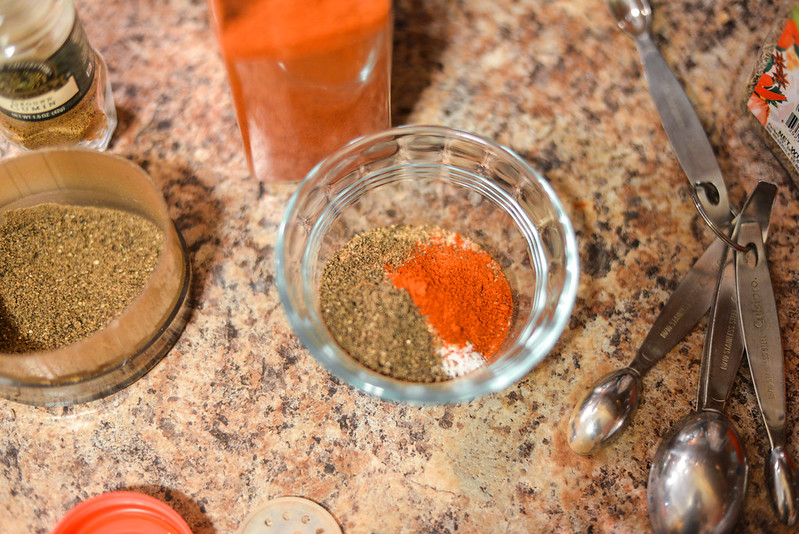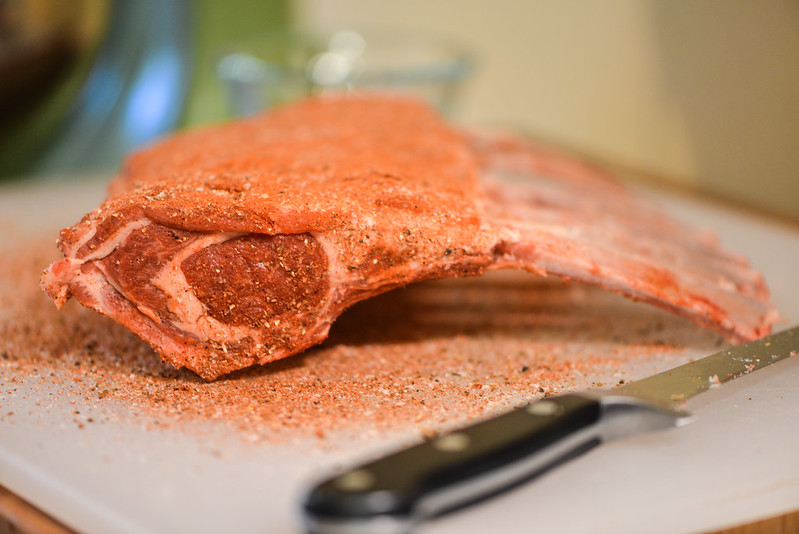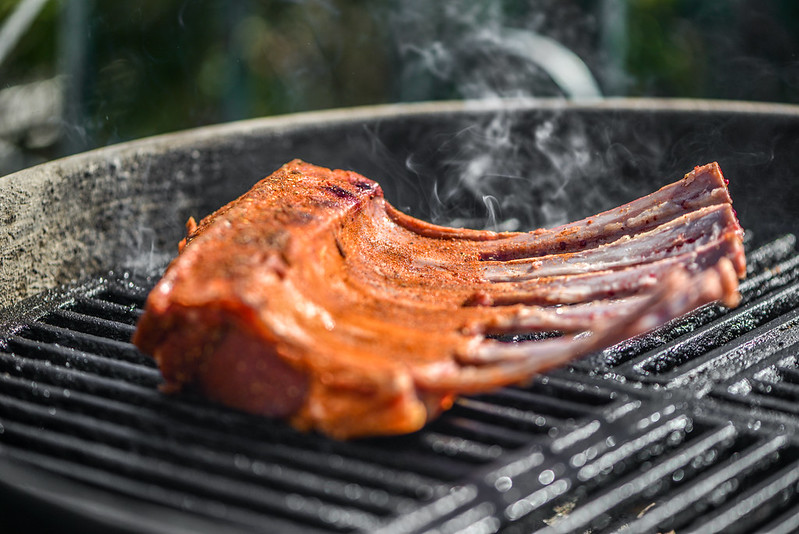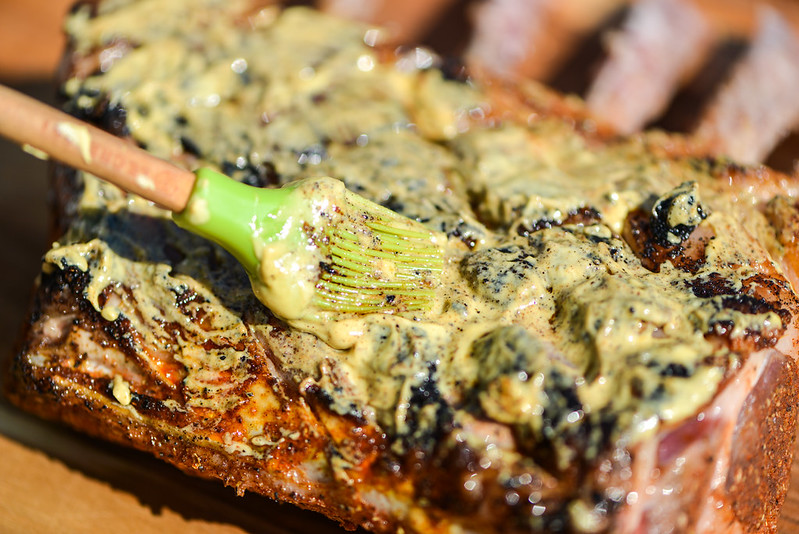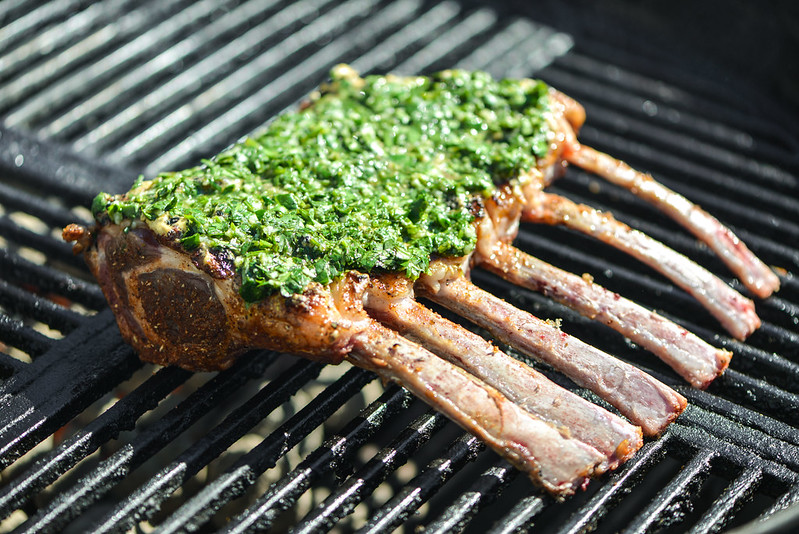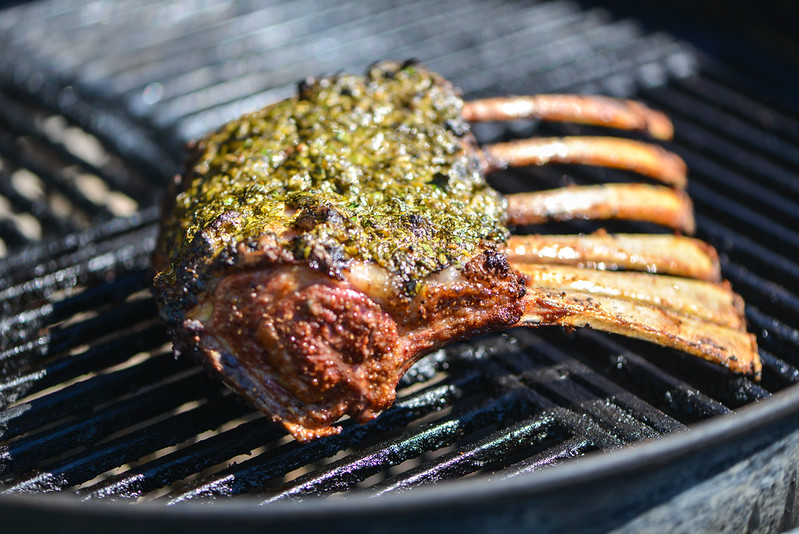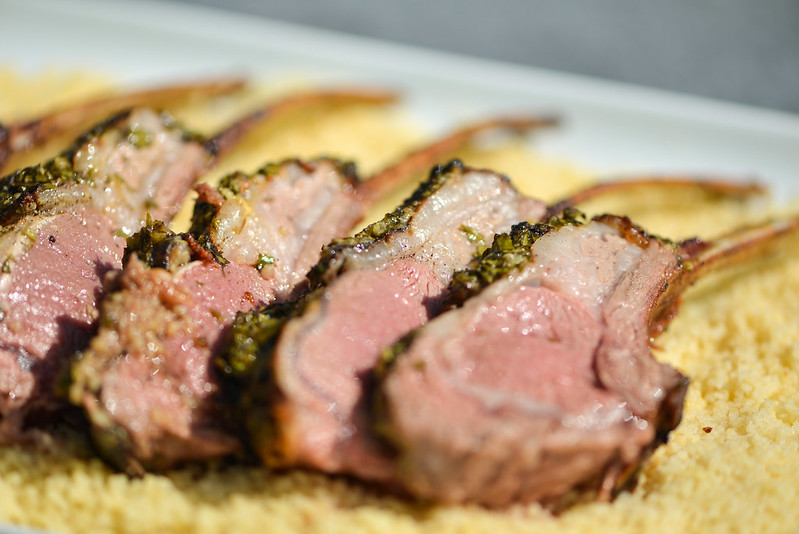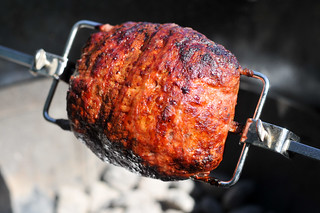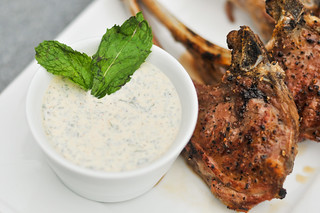Moroccan-Spiced Rack of Lamb
Holidays call for a little splurging. And when it comes to Easter, lamb is an obvious, splurge-worthy choice. I usually end up going with the leg, but after years of holiday leg of lamb recipes, I decided I owed myself a treat and picked up a rack of lamb instead. The question was, what flavors could I use to make it as delicious as possible?
After creating a spate of Moroccan grilling recipes last summer, I've become enamored with North African flavors. They're simultaneously earthy and spicy, fresh and acidic. It's an instantly recognizable combination, and one that can both stand up to and enhance the strong flavor of lamb.
I ended up taking a two-step approach to layering those flavors. First, I made a dry spice rub by combining earthy spices—paprika, cumin, coriander, and cinnamon—with hot ones, like black pepper and cayenne. I applied it liberally to my Frenched rack of lamb. With that side of equation taken care of, I moved onto my fresh ingredients.
To capture some brightness, I made a pesto-like blend of cilantro, parsley, lemon juice, garlic, and olive oil. But rather than slathering it over the chops right away, I decided to wait until the lamb was partially cooked. It's a method I've used in the past—I start off by searing the meat and sealing in the rub over high heat, and then add my moist ingredients later on to avoid burning them to a crisp.
Having invested in a high-quality, expensive piece of meat, I wanted to make sure to grill it perfectly. And when it comes to lamb, that means cooking it slowly and uniformly over even, indirect heat.
But first, I wanted to get a nice sear on it, so I decided to start with a blast of intense, direct heat. Luckily, rack of lamb comes with a generous layer of fat over the meat, which acts as insulation, making it possible to sear the outside of the rack while barely cooking the inside.
That layer of fat can often be a problem, because when you put fat over the coals, it renders, drips down, and causes flare-ups. In some cases, those flare-ups can ruin meat—especially thinner cuts—by burning it to death. But because I wanted to brown the lamb as quickly as possible, they actually helped quite a bit: as those narrow towers of intense flames rose from the coals and kissed the meat, the outside seared incredibly quickly. I managed to get an aromatic, burnished crust well before the internal temperature of the meat was able to rise.
Once it was seared, I moved the lamb to a cutting board to apply the herb mixture. I needed some "glue" to get it to stick to the meat, so I first brushed on a thin layer of Dijon mustard, then pressed the herb mixture into that.
I returned the lamb to the grill, this time over indirect heat and with the bones as far from the fire as possible to prevent them from charring (if you want them to be a pristine white, you can also wrap them in tin foil).
Then I covered the grill and cooked the lamb slowly until it reached a rosy medium-rare—the meat should register 130°F on an instant-read thermometer. I wouldn't bring rack of lamb past medium-rare; anything higher and the meat will begin to toughen and too much of the flavorful juices will be lost.
The required 10 to 15 minute rest was an exercise in extreme restraint , but the wait was well worth it. The meat came out incredibly tender and juicy, with an amazingly rich and smooth flavor. I must say, the earthy spice crust balanced perfectly with the bright, fresh parsley and cilantro mixture. It certainly felt like I was eating something special, a dish reserved for those moments when a little excess is what's called for. The Moroccan flavor may be a departure from your standard holiday lamb, but it's one that works especially well and certainly won't disappoint if you're looking to change things up this Easter.
You Might Also Like
Comments
-
Mark Bradfordson Beautiful, Josh! I saw the first picture and immediately thought "Lamb Lollipops" :)
-
Chris You make me wish that I liked lamb. It's just not for me but your pictures make it look so appetizing. Great shots.
